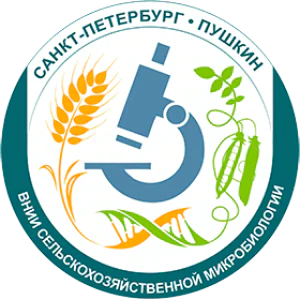The diversity of actinorhizal symbiosis
Publication type: Journal Article
Publication date: 2012-03-08
scimago Q1
wos Q2
SJR: 0.703
CiteScore: 6.2
Impact factor: 2.5
ISSN: 0033183X, 16156102, 09348727
PubMed ID:
22398987
General Medicine
Cell Biology
Plant Science
Abstract
Filamentous aerobic soil actinobacteria of the genus Frankia can induce the formation of nitrogen-fixing nodules on the roots of a diverse group of plants from eight dicotyledonous families, collectively called actinorhizal plants. Within nodules, Frankia can fix nitrogen while being hosted inside plant cells. Like in legume/rhizobia symbioses, bacteria can enter the plant root either intracellularly through an infection thread formed in a curled root hair, or intercellularly without root hair involvement, and the entry mechanism is determined by the host plant species. Nodule primordium formation is induced in the root pericycle as for lateral root primordia. Mature actinorhizal nodules are coralloid structures consisting of multiple lobes, each of which represents a modified lateral root without a root cap, a superficial periderm and with infected cells in the expanded cortex. In this review, an overview of nodule induction mechanisms and nodule structure is presented including comparisons with the corresponding mechanisms in legume symbioses.
Found
Nothing found, try to update filter.
Found
Nothing found, try to update filter.
Top-30
Journals
|
1
2
3
4
5
6
7
|
|
|
Symbiosis
7 publications, 5.11%
|
|
|
Plants
5 publications, 3.65%
|
|
|
Frontiers in Plant Science
5 publications, 3.65%
|
|
|
PLoS ONE
5 publications, 3.65%
|
|
|
Current Opinion in Plant Biology
5 publications, 3.65%
|
|
|
New Phytologist
5 publications, 3.65%
|
|
|
Advances in Botanical Research
4 publications, 2.92%
|
|
|
Soil Biology
4 publications, 2.92%
|
|
|
Trends in Plant Science
3 publications, 2.19%
|
|
|
Microorganisms
2 publications, 1.46%
|
|
|
Genes
2 publications, 1.46%
|
|
|
Scientific Reports
2 publications, 1.46%
|
|
|
Plant, Cell and Environment
2 publications, 1.46%
|
|
|
Sustainable Agriculture Reviews
2 publications, 1.46%
|
|
|
Journal of Experimental Botany
2 publications, 1.46%
|
|
|
International Journal of Systematic and Evolutionary Microbiology
1 publication, 0.73%
|
|
|
PeerJ
1 publication, 0.73%
|
|
|
Biologia (Poland)
1 publication, 0.73%
|
|
|
Antioxidants
1 publication, 0.73%
|
|
|
Frontiers in Microbiology
1 publication, 0.73%
|
|
|
Frontiers for Young Minds
1 publication, 0.73%
|
|
|
3 Biotech
1 publication, 0.73%
|
|
|
BMC Genomics
1 publication, 0.73%
|
|
|
Metabolomics
1 publication, 0.73%
|
|
|
Nature Communications
1 publication, 0.73%
|
|
|
BMC Plant Biology
1 publication, 0.73%
|
|
|
BMC Biology
1 publication, 0.73%
|
|
|
Applied Biochemistry and Biotechnology
1 publication, 0.73%
|
|
|
Microbiome
1 publication, 0.73%
|
|
|
1
2
3
4
5
6
7
|
Publishers
|
5
10
15
20
25
30
35
|
|
|
Elsevier
34 publications, 24.82%
|
|
|
Springer Nature
31 publications, 22.63%
|
|
|
Wiley
20 publications, 14.6%
|
|
|
MDPI
11 publications, 8.03%
|
|
|
Frontiers Media S.A.
7 publications, 5.11%
|
|
|
Oxford University Press
6 publications, 4.38%
|
|
|
Public Library of Science (PLoS)
5 publications, 3.65%
|
|
|
Cold Spring Harbor Laboratory
3 publications, 2.19%
|
|
|
IntechOpen
2 publications, 1.46%
|
|
|
American Society for Microbiology
2 publications, 1.46%
|
|
|
Microbiology Society
1 publication, 0.73%
|
|
|
PeerJ
1 publication, 0.73%
|
|
|
IOP Publishing
1 publication, 0.73%
|
|
|
Pleiades Publishing
1 publication, 0.73%
|
|
|
American Institute of Mathematical Sciences (AIMS)
1 publication, 0.73%
|
|
|
Taylor & Francis
1 publication, 0.73%
|
|
|
American Association for the Advancement of Science (AAAS)
1 publication, 0.73%
|
|
|
Hindawi Limited
1 publication, 0.73%
|
|
|
Japanese Society for Plant Cell and Molecular Biology
1 publication, 0.73%
|
|
|
Annual Reviews
1 publication, 0.73%
|
|
|
CABI Publishing
1 publication, 0.73%
|
|
|
5
10
15
20
25
30
35
|
- We do not take into account publications without a DOI.
- Statistics recalculated weekly.
Are you a researcher?
Create a profile to get free access to personal recommendations for colleagues and new articles.
Metrics
138
Total citations:
138
Citations from 2025:
8
(5.84%)
Cite this
GOST |
RIS |
BibTex |
MLA
Cite this
RIS
Copy
TY - JOUR
DO - 10.1007/s00709-012-0388-4
UR - http://link.springer.com/10.1007/s00709-012-0388-4
TI - The diversity of actinorhizal symbiosis
T2 - Protoplasma
AU - Pawlowski, Katharina
AU - Demchenko, Kirill N
PY - 2012
DA - 2012/03/08
PB - Springer Nature
SP - 967-979
IS - 4
VL - 249
PMID - 22398987
SN - 0033-183X
SN - 1615-6102
SN - 0934-8727
ER -
Cite this
BibTex (up to 50 authors)
Copy
@article{2012_Pawlowski,
author = {Katharina Pawlowski and Kirill N Demchenko},
title = {The diversity of actinorhizal symbiosis},
journal = {Protoplasma},
year = {2012},
volume = {249},
publisher = {Springer Nature},
month = {mar},
url = {http://link.springer.com/10.1007/s00709-012-0388-4},
number = {4},
pages = {967--979},
doi = {10.1007/s00709-012-0388-4}
}
Cite this
MLA
Copy
Pawlowski, Katharina, et al. “The diversity of actinorhizal symbiosis.” Protoplasma, vol. 249, no. 4, Mar. 2012, pp. 967-979. http://link.springer.com/10.1007/s00709-012-0388-4.
Profiles























